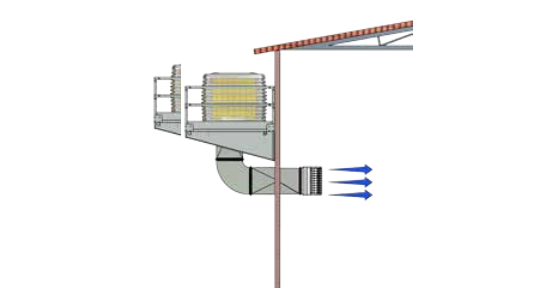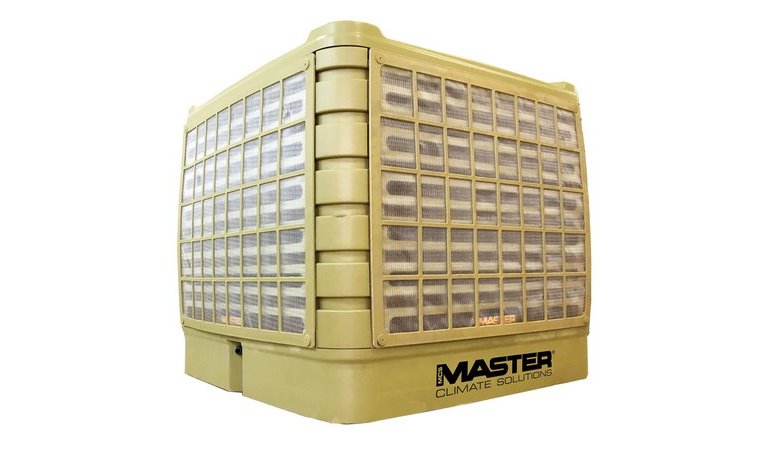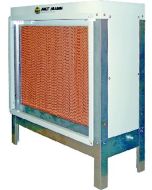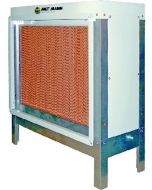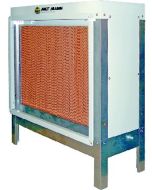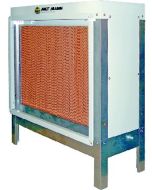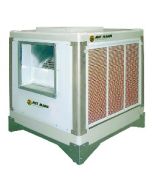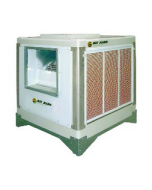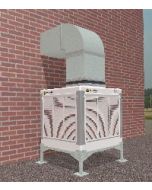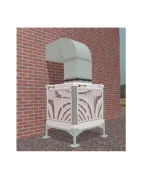Introduction to Static Evaporative Coolers
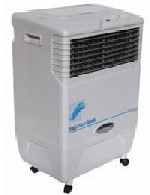
small mobile evaporative cooler
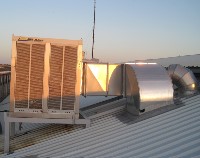
static evaporative cooler
Mobile evaporative coolers are a common enough alternative to mobile air conditioners and are for most people are their 1st introduction to evaporative cooling. The same principles that are found in mobile units can equally be applied to installed static evaporative coolers, albeit that they are more complex and on much larger scale.
The main difference between mobile and static evaporative coolers is that where mobile coolers are inevitably placed inside the room to be cooled and recirculate the air, static evaporative coolers are located outside and deliver cooled air into the building.
Why installed evaporative coolers are better than mobile ones
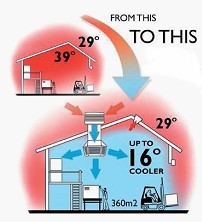
The the cooling effect of static evaporative coolers comes from a combination of reduction in ambient temperature and displacement of hot air in the building.
With mobile evaporative coolers fresh air has to be made available via open windows and doors to ensure that the relative humidity of the air does not get too high and therefore severely limit the performance of the cooler. The ventilation requirement for mobile coolers is seldom forced, so inevitably the humidity rises to a level where the natural ventilation rate and evaporation rate from the cooler are in balance, and that humidity is always higher that the ambient outside air. This means that the performance of the mobile evaporative cooler is always limited by the natural ventilation rate.
With installed static evaporative coolers, the air is brought from outside, cooled and delivered inside usually via ducts and diffusers. It means that the warm air inside the building is displaced, through doors, windows and vents, by the positive pressure exerted by the cooled air coming in from the cooler. Also the performance of installed static evaporative coolers is capped by the humidity of the outside air, not the inside air. This generally means that static evaporative coolers are more effective than mobile ones.
On warm and hot days, the inside environment of industrial buildings tend to get significantly hotter than the ambient outside temperature, particularly if the thermal insulation is poor, or if there are heat generating machines inside. Even without heat generating machines the difference can be as much as 10°C. With this significantly higher temperature inside compared to outside, even forcing uncooled ambient air at a sufficient air change rate into the building will make a significant difference to those working inside. With static evaporative coolers added, the effect will be even more beneficial with lots of cool, clean fresh air.
Key Features of Static Evaporative Coolers
As well as being larger than mobile units, installed static evaporative coolers are usually a bit more complex and have features that equip them to be safe and reliable for long-term use. The main features are continuous drainage, which is set at a rate according to the water quality, to prevent salts concentrating building up as a crud in the sump, and also as standard they have automatic drainage valves, which ensure that the sump is automatically drained when the cooler is not in use.
For more details on our range of static evaporative coolers and how they are used check out some of the other guide pages in this area of the site or go to our shop.
If you need any help in working out which static evaporative coolers you need for your particular application of have any questions about them, please call us on 01729 824108.

